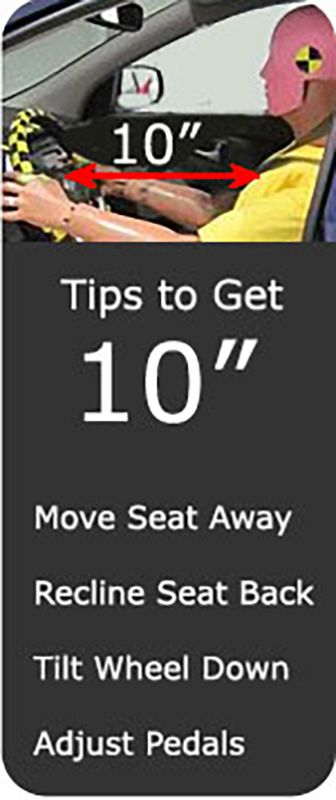
WITH AIR BAGS - YOUR BEHAVIOR MATTERS
Your air bags are designed to work under certain conditions. You need to replicate those conditions in your vehicle.
1. Always Wear Your Seatbelt
Air bags are secondary safety systems designed to work with seatbelts. Your greatest risk from an air bag is being in an incorrect position when the air bag deploys. A properly buckled seatbelt should hold you in the correct position during an accident.
2. Sit 10 Inches from the Air Bag
This distance is measured from the steering wheel center to your breastbone. The risk zone for air bags is the first 2 to 3 inches of inflation. Placing yourself 10 inches from your driver-side air bag provides you with a clear margin of safety.
3. Only Install Rear-Facing Infant Seats in the Back
Never place a rear-facing infant seat in front of the passenger air bag. A rear-facing infant seat will place your baby's head much closer than 10 inches to the air bag. If you must transport an infant in the front-seat, you may need to have an air bag on-off switch installed.
4. Children Under 12 Should Ride in the Back
Putting your children in the backseat reduces their risk of death by 27%.(source NHTSA DOT HS 811 264)
If you must transport a child under the age of 12 in the front seat, position the seat as far away from the airbag as possible.
How Can You Protect Yourself and Your Loved Ones?
- Get the Car Inspected by a Certified Air Bag
- Technician Order a vehicle history - look for accident history and service records
- Search the U.S. Dept. of Transportation database for registered vehicles with deactivated airbags
- Know the safety features of the make/model/year you are purchasing
- Have the dealer confirm - in writing - the safety features are present and in working order
